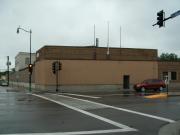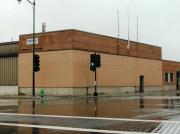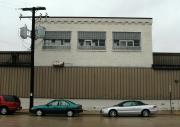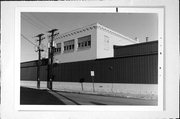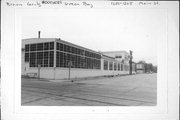Property Record
1201-1205 MAIN ST
Architecture and History Inventory
| Historic Name: | HUDSON-SHARP MACHINE SHOP |
|---|---|
| Other Name: | Saranac Corporation; Pomps Tires (2009) |
| Contributing: | |
| Reference Number: | 2089 |
| Location (Address): | 1201-1205 MAIN ST |
|---|---|
| County: | Brown |
| City: | Green Bay |
| Township/Village: | |
| Unincorporated Community: | |
| Town: | |
| Range: | |
| Direction: | |
| Section: | |
| Quarter Section: | |
| Quarter/Quarter Section: |
| Year Built: | 1890 |
|---|---|
| Additions: | |
| Survey Date: | 1985 |
| Historic Use: | industrial building |
| Architectural Style: | Astylistic Utilitarian Building |
| Structural System: | Unknown |
| Wall Material: | Brick |
| Architect: | |
| Other Buildings On Site: | |
| Demolished?: | No |
| Demolished Date: |
| National/State Register Listing Name: | Not listed |
|---|---|
| National Register Listing Date: | |
| State Register Listing Date: |
| Additional Information: | Photo code #2: BR-FRV 10/13 Originally, a fine brick industrial building having large metal industrial sash windows, now totally covered with modern metal siding. The two story tall brick flat roofed center block has a corbel table below the cornice. All the windows in the 2nd floor have been altered, either by filling or changes in materials, including the use of glass block. The small brick addition facing on Main Street is a much later building, now almost totally covered in metal siding. HAER INVENTORY (06/1979): The original building is constructed of brick with laminated wood joists supporting a gable roof. Subsequent additions to the building now enclose this structure on three sides. The origninal business, which goes back to approximately 1890, was a small machine shop, located on the East River, which repaired steamboats and made simple parts for sawmill machinery. Later two brothers "by the name of Schwartz" added a foundry to the plant. When the first electric railway in the U.S. was established at Appleton, WI, this plant turned out the first car wheels used for street cards and specialized in this for a number of years. In the 1890's, paper machinery was built, including the first napkin folder ever built in the U.S. In 1912 David Hudson and Alexander Sharp formed a partnership and took over the original business. Hudson Sharp went into the business of making equipment for the first paper mill when it came to Green Bay. The Hoberg Paper Mills bought control from the Hudson to get more production of converting machinery. Acquisition of Hudson Sharp by the Food Machinery Chemical Co. of San Jose, Calif. took place on September 5, 1956. The 1966 Gardner-Denver Cooper Industries took over the operation. |
|---|---|
| Bibliographic References: | A. Abrahams, Paul P. Industrial Survey of Brown County. Industrial Sites Historical Industrial Survey. Unpublished manuscript on file, Hisotric Preservation Division, State Historical Society of Wisconsin. (B.) "Makers of Machines Show Gains," GREEN BAY PRESS-GAZETTE, August 3, 1957, Greater Green Bay Progress Edition, p. B-14. (C.) "Hudson Sharp Paper converting Machines Are in Demand in Many Parts of the World," THE WISCONSIN MAGAZINE, 1951, Special Green Bay Number, Madisen Publishing Co., Appleton, WI, p. 96. (D.) Jim Bottkol, personnel director for Gardner-Denver, interviewed by Nancy Senn, 09/1980. |
| Wisconsin Architecture and History Inventory, State Historic Preservation Office, Wisconsin Historical Society, Madison, Wisconsin |

